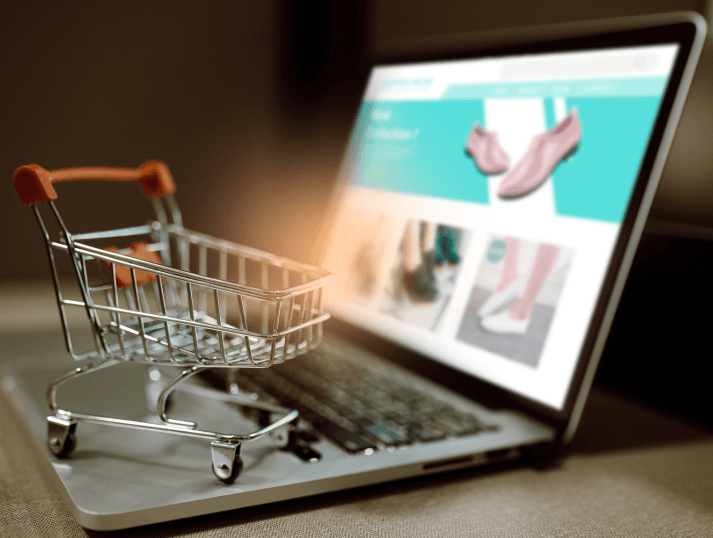Why consumers make purchase or abandon their shopping cart in e-commerce – DHL report

E-commerce shopping trends are changing all the time, so knowing what matters most to customers should be crucial for any retailer looking to succeed in online sales. The DHL E-Commerce Trends Report 2025, based on interviews with consumers from 24 countries (including Poland), provides a lot of valuable information about what today’s consumers expect from online retailers. We have compiled the most important findings from this publication.
From browsing to buying
Consumers are still much more likely to browse e-commerce websites than to buy there – 58% of them view e-commerce offerings 2-3 times a week, but only 22% make purchases there 2-3 times a week. 52% of respondents shop at e-stores once a month or less often. So retailers still have a lot of room for improvement – properly designing the customer journey at each touchpoint should help turn views into sales.
Smartphones are becoming the most important tool for online shopping, with as many as 90% of consumers using them for this purpose. Mobile apps are also growing in popularity, with 77% of respondents buying online using them (83% among millennials), as well as shopping using voice commands (36%). The latter method is particularly popular among those who are subscribers – 3 in 5 of them buy this way. By the end of 2025, the global value of products and services purchased by giving a command to smart assistants is expected to reach $164 billion.
Delivery and returns are key
The issue of delivery and returns is very important to consumers. 81% will abandon a purchase if they cannot choose their preferred form of delivery, and 79% will abandon a purchase if they are not offered a suitable form of return. What’s more, as many as 72% believe that free delivery improves the shopping experience. In contrast, they are most frustrated by: the high cost of delivery (58%), long delivery times (52%), too little product information (42%) and having to pay for a return (39%).
The more delivery and return options a store offers (preferably fast and inexpensive), and the more information it provides about the offer, the greater the chance of satisfying the customer and thus finalizing the transaction. More and more people are choosing to pick up shipments at parcel lockers or parcel points – 25% of consumers regularly use this option, and in Europe the percentage is 35%. What’s more, when it comes to returns, the preference is even more evident – already 79% of Europeans and 66% of consumers worldwide have returned unwanted products by taking them to a parcel locker or parcel point.
Payment’s flexibility and subscription’s convenience
As important for consumers is payment flexibility and cost transparency when finalizing an order. Many abandon a purchase if they cannot choose their preferred method of payment for the product they are buying – 35% admitted that they happened to abandon their shopping cart because the online store did not offer their preferred payment method.
A wide selection of e-commerce payment options is now a necessity, with Buy Now, Pay Later gaining particular importance. Already 50% of consumers use deferred payment, and its popularity is highest among younger age groups. The ability to use this option often determines the purchase online, and interestingly, according to as many as 40% of consumers, it also influences the higher value of the shopping cart.
Subscription models are also gaining in popularity, with one in three consumers already using some form of online shopping subscription. Convenience is the most frequently stated reason for this, followed closely by savings. Ongoing discounts, free shipping and returns – all this makes customers eager to return to the store or brand.
Subscription models can increase customer lifetime value, build customer loyalty and provide “predictable” revenue. The subscription market is projected to reach $687 billion by the end of 2025.
Marketplaces dominate, social media inspire
Marketplaces absolutely dominate when it comes to where products are purchased online – as many as 98% of consumers buy on such platforms. At the same time, the importance of social media is growing rapidly – already 7 in 10 internet users have bought something through social media, and as many predict that in 2030 it will be their main shopping channel. It is also worth noting the great importance of social media as a source of shopping inspiration for the youngest consumers – as many as 88% of Generation Z representatives admit that they buy products that are popular there.
Sustainability and new technologies are revolutionizing the shopping experience
As many as 72% of consumers say they consider the environmental aspect when making purchasing decisions. One in three has abandoned the shopping cart due to environmental concerns (among Generation Z, 49%). Consumers expect, among other things, packaging made of eco materials (53%), recycling options (40%) and information on the carbon footprint of shipments (57%). There is also growing interest in the circular economy, with 52% buying used or refurbished products and 58% wanting stores to offer buy-back or recycling programs.
7 in 10 respondents want retailers to offer solutions based on artificial intelligence. Foremost among them: virtual fitting rooms (77%), AI-assisted assistants (76%), voice-assisted product search (72%), augmented reality (AR) (71%), suggesting products to add to the shopping cart (70%) and automatically re-ordering if a product runs out (69%). In 2024, the estimated value of the AI-enabled e-commerce market was $7.25 billion – projected to grow to more than $64 billion by 2034.
DHL E-Commerce Trends Report 2025 is based on a survey conducted in February and March 2025 with 24,000 respondents from 24 countries, including Poland (1,000 people from each country). The survey had more than 70 questions, and respondents had to have made at least one online purchase in the three months preceding the survey.

